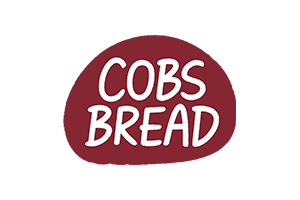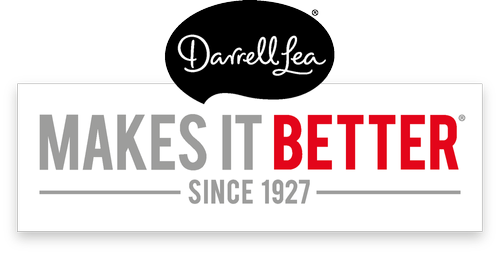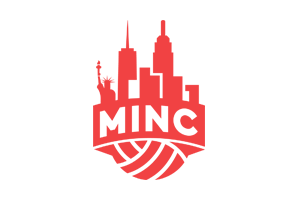US colleges are very unique, both in terms of the educational experience they provide to students, which is quite different from the university system in Australia and other countries, and in their admissions processes. Applying to college in the US is complex and confusing, even to US natives, because there is no one objective admissions criterion that all schools adhere to.
I've asked experts, IvyTutors to put together information for those of you at the beginning of the college and university process, to at least understand the big picture questions and there are links below for the webinars they run!
Higher education options: Schools, Colleges, and Universities
With over 3000 colleges and universities, choosing a school in the United States can be a daunting task! Here’s a broad overview of the different types of schools in the US and how they compare to each other in terms of price and quality.
Public Options for Education
- Community Colleges offer two-year programs called “Associates Degrees,” as opposed to the normal four-year “Bachelor’s Degree.” Community colleges are much less expensive than 4-year universities, so many students may opt to get a two year associates degree and then transfer to a 4 year school in order to save money. Some states even guarantee spots at top state universities for community college students who perform well academically. Community colleges are public and not particularly competitive, but can still be high quality.
- State Schools – Each of the states has their own public higher education system. The schools vary in quality, but many of them are excellent and also quite competitive. State schools are often required to give preference to students from that state (because they are paid for by the state), and are also cheaper for in-state students than out-of-state. For example, California has fantastic and very competitive state university systems, with top tier schools like UCLA, UC Berkeley, and UC San Diego.
Private Options for Study
- The Ivy League is a group of the oldest and most prestigious private universities in the US : Yale, Harvard, Princeton, Columbia/Barnard, Cornell, Dartmouth, Brown, and UPenn. Stanford, University of Chicago, and MIT are practically ivies, as they are just as prestigious and competitive. These schools have top rated programs, faculty, and facilities, and are also very expensive, though they also have very generous need-based financial aid. With less than 5% acceptance rates, there’s never any guarantee of getting into an Ivy, though they are often students’ top choice schools.
- Liberal Arts – What we call Liberal arts schools are colleges and universities where you can basically study anything, but that do not provide any pre-professional training (there are some exceptions).
- STEM Focused Schools – There are other schools that are focused on science, technology and engineering. These are great choices for students who know they want to pursue these fields. Some of the most well known of these are MIT, RPI, Olin, Colorado School of the Mines, and the Copper Union.
- Art Schools – For the arts-inclined, there are schools like RISD, Cooper Union, SCAD, and the Art Institute of Chicago that provide a focused arts education in addition to general education requirements.
What Kids Study in College
An American college education is much broader than in many other countries. Students usually don’t declare a major until the end of sophomore (2nd) year. There are often general education requirements (2 courses in math, 2 in science, foreign language etc.). This is different from many other countries where students specialize in one area of study right away. However, some very specialized programs do exist at some schools.
Although they are non-essential for graduation, university extracurriculars (student publications, arts productions, volunteer work etc.) can actually be a great way for students to get pre-professional experience. For example, holding a leadership position on the college newspaper can serve as an excellent stepping stone for a career in journalism. Greek life (joining a fraternity or sorority), societies, and clubs can also provide powerful alumni networks, which can benefit a student greatly in the professional world.
The College Admissions Landscape
There is no doubt that the college admissions landscape has become very competitive in recent years, but this is only if you are paying attention to certain schools like the Ivy League and top liberal arts colleges, many of which have an acceptance rate of below 6% percent. There are actually only 60 colleges that accept less than 20 percent of applicants. The problem is that 33% of applicants apply to the same 20% of all colleges! These numbers make it seem like college is impossible to get into but, in reality, the average acceptance rate is around 66%.
The key to success in the college application process is identifying the right fit. These schools want YOU, and may even be a better fit than some of the more popular name brand institutions. There’s nothing wrong with throwing your hat in the ring by applying to the most competitive schools, as long as you are not applying to those schools exclusively. The most important thing is to make sure your college list is BALANCED, meaning it includes “Reaches,” “Likelies,” and “Safeties.”
How Colleges Evaluate Applicants
There are several criteria by which colleges evaluate their applicants, but how they prioritize these criteria is not always transparent. Generally speaking, here are the essential components for a college application:
- High school transcript (your grades)
- Standardized test scores (sometimes optional)
- Extracurricular Activities/Resume
- Application – Common Application, Direct to Institution, Coalition
- Personal Statement and Supplemental Essays
- 3 Recommendation letters: HS Counselor + 2 Core Subject Teachers
- Demonstrated interest
It is important to keep in mind that many colleges have their own agenda in trying to create a diverse student body and ensure that their various academic and extracurricular programs are well subscribed to. This means that schools need to recruit athletes for their sports teams, students from different geographic locations and ethnicities for their diversity initiatives, and a French horn player for their orchestra! You can have perfect grades and test scores, but still not get into the school of your choice because you don’t tick one of these boxes and they already have thousands of applicants with the same credentials.
The key to success in admission is to be uniquely you. There is less emphasis on being well rounded and more emphasis on students who have a strong specialty and can tell a unique story. Colleges try to evaluate applicants as a whole person, and the more individualized you are as a person, the more likely you are to stand out to the admissions committees. This is very different from many universities outside the US that accept students solely on academics and test scores. In sum, a successful application is all about knowing and sharing the best of YOURSELF. This is a tall order for high school students who are just figuring out their identity, but year after year these are the types of students we see get the most offers from their top colleges.
How Students Can Prepare for the Admissions Process
Here are 5 things every student (with parental support, of course) should be doing to prepare for the college admissions process:
- Get good grades. A strong academic transcript is essential. Junior year grades and first semester senior year grades are particularly important. Even if a student performs perfectly on standardized tests, a poor or erratic academic record l will put them out of the running at the more selective schools. Doing well in school should be the top priority all throughout high school.
- Explore extracurricular activities. Remember, In the US, top colleges evaluate applicants using holistic admissions, looking at everything from extracurriculars to family background. This means that what students do outside the classroom is almost as important as what they do inside. Starting freshman year, students should begin experimenting with different extracurriculars to see what resonates with them. By sophomore year they should commit to two or three activities, with an eye to taking on leadership positions. Colleges want to see that the students they are admitting will be able to contribute to all of the clubs, teams, and organizations that they pride themselves on.
- Work on developing a narrative; become a “mini-expert.” Colleges are increasingly looking for students who are mini-experts, wanting to see that your curiosity or passion has led you to delve deeper into a particular issue, interest, or academic pursuit. There’s nothing wrong with being a generalist, but it doesn’t help an admissions committee make a choice between you and another student. Whatever you choose to dive deep into, what we always emphasize to our students is the importance of telling a story with your application. Presenting colleges with your unique compelling story will get you much further than just listing your achievements.
- Get a head start on test prep. The SAT and ACT are the two standardized tests that colleges look at as part of their admission criteria. Although the pandemic prompted many schools to go test-optional, we anticipate that standardized testing will make a big comeback. When it comes to test preparation, the earlier you start, the better. We recommend taking an SAT and ACT diagnostic in the spring of sophomore year, or in the fall of Junior year at the latest. From this diagnostic test, you will learn how far your initial score is from your target score, which should be the median score accepted by the schools on your college list. Students should then take on a course of study to fill in content gaps, develop test-taking strategies, and take abundant practice tests. Working with a seasoned test prep tutor can also be extremely helpful for students who are struggling to raise their score.
- Explore all your options. To start, it’s important to realize that there is no one school for you. This attitude leads to disappointment, and can even prevent you from finding the school you will actually be most happy at. It is important to cast a wide net in the initial college search process by researching lots of schools and attending as many college tours and information sessions as possible. We recommend buying the Fiske Guide to Colleges, or using the search functions in programs like “College Planner Pro” or “Naviance” to help sort schools by program of study, geographic area, and other criteria. An experienced college admissions counselor or coach will also be able to point students in the right direction and recommend schools that would be a good fit for them.
While not as focused as university in most places, the college experience in the US has lots to offer, and if you plan early, the application process can be a lot less stressful than you think. College opens doors to many amazing opportunities: to live on campus in a new place, build lifelong relationships with students and professors, learn how to learn (the essence of the liberal arts education), and join alumni networks that can help shape your future!
There’s a reason, after all, why many consider college to be “the best four years of your life”
If you’re looking for more insight on the college application process, check out our upcoming free webinars at https://ivytutorsnetwork.com/resources/events













Excellent summary. I have 3 kids in US colleges and yes, it is “complex and confusing” and stressful!
We have a high school senior who will be starting college in the fall. We are concerned about his visa and whether he should change from E3 to something else. We are confused about his visa options and what it means in terms of pricing and ability to stay in the US for work after graduation if he wants to. Also, we find that there are thousands of scholarships available for college students but very few of them are available to non-US citizens or green card holders. Sometimes it’s not until you have prepared lengthy scholarship applications, including essays, that you find out the scholarship is not available to Australians living in the US on an E3. Is there an easy way to find out about scholarships that will apply to Australians living in the US on an E3 and are there any that you know of?
Dathan
Unis/College scholarships for international students (on a visa) are very light on the ground unless you are in the top 1% of test scores or an athlete. We switched from a e3 to a GC when our eldest was 19 purely so our kids could attend college (lowers costs) and have some flexibility and options/security once they turned 21 and no longer covered by an E3